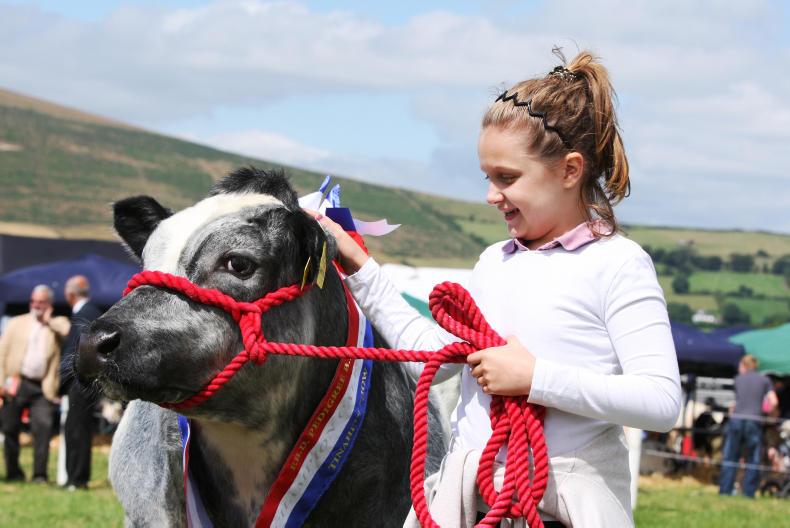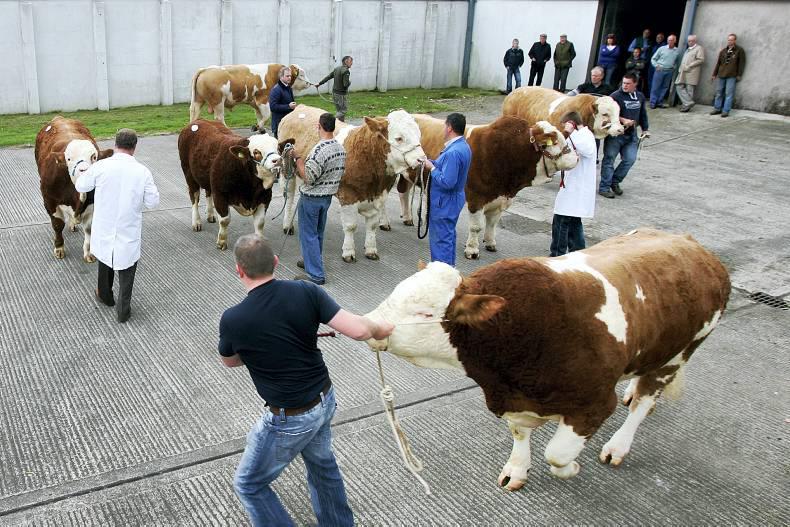Co Monaghan farmer William Cranston was this week sentenced to five months imprisonment after being convicted of handling three cattle which he knew to be stolen. William Cranston, from Skerrymore, Drumnacrib, Castleblaney, will appeal the conviction and was released on bail subject to conditions.
The trial ran over Monday and Tuesday in Trim District Court under Judge Grainne Malone and it looked closely at the Department of Agriculture’s cattle identification and traceability system as it operates on farm and in slaughter plants. Detailed evidence was heard from the Investigations Division of the Department of Agriculture, formerly the SIU. Three suckler farmers from the west of Ireland gave evidence regarding the dams of the bullocks in question. The former director of Wetherbys in Co Kildare gave evidence on the reliability of DNA testing. A forensic scientist gave evidence regarding ear tags while a garda detective gave evidence of the gardaí’s role.
Bullocks stolen
The court heard that on the night of 14-15 September 2014, 11 Charolais bullocks were stolen out of a group of 24 belonging to Ralph Kelly of Drumconrath, Co Meath. “I knew something was wrong as soon as I got there,” Kelly told Rory Hayden, state solicitor for Co Cavan, prosecuting. “The fence was broken, the barbed wire was broken and the electric fence was on the ground, although the gate was closed.”
He said that the cattle had been walked to a crush in a neighbour’s field. “You could see the tracks going out of the gate. A certain number of them jumped back into the field – that’s why the fence was broken.” He said that the cattle were top-quality bullocks.
Kelly told defence counsel James O’Brien that he buys cattle, for finishing, from Roscommon, Castlerea and Elphin marts. On the issue of losing cattle tags, he said he may have lost one in the past three years. “I don’t have any problem with tags,” he said.
Department veterinary official John McConville, who works in the Investigations Division, told the court that because of cattle thefts occurring in counties Monaghan, Louth and Cavan, the Department was conducting joint investigations with gardaí. One herd under investigation in 2014 was that of William Cranston.
He said that on Friday 19 September 2014 he went to the Traditional Meat Company in Oldcastle, Co Meath, to see what animals had been presented for slaughter. He said: “By chance five animals had been presented that morning in the Traditional Meat Company from the herd of William Cranston.”
Documentation
He asked management at the firm to see the documentation relating to these cattle. The documentation listed the ear tag numbers of the animals and indicated that all five had been born in Cranston’s herd. He said the details of one animal “jumped out”. Its date of birth showed it to be 10 months old when presented for slaughter but it had a cold carcase weight of 394.4kg. “Knowing the type of farming that Mr William Cranston does, I knew it wasn’t possible,” he said.
Further, he said he had carried out an inspection on Cranston’s farm two weeks earlier “and I didn’t notice any discrepancy with regard to weight and age”.
He said: “When I saw this document alarm bells went off. There was an issue with the identity of this animal.” He inspected the carcases of the five cattle, by now hanging in the chill area, and requested they be isolated and detained. On the suggestion of the manager of the abattoir, Frank Twomey, he purchased a padlock to ensure that the carcases would not be removed by mistake by factory staff. He said: “I wanted to take tissue samples from each carcase to have them tested for DNA. I used a knife to cut off a chunk of meat and put each, with tag number, in a ziplock bag.” He wanted the carcases DNA-tested to have the results “on the system”, he said.
He then obtained the passports for the five cattle from the vet on duty in the lairage, Ross Kelly. McConville said that he also wanted to locate ear tags for as many of the five bullocks as he could. He said: “They had gone out to a skip. With the help of a factory operative I recovered some of them.” He recovered both tags for three of the bullocks and one tag for the other two. The skip was large and half full of heads and ears of cattle. He said: “Stuff had gone off as well.” He said that one of the bullocks was listed on its passport as a Charolais, “but that ear was black. It added a question mark in my mind”.
He placed all the carcase samples in an evidence bag, sealed it and – to preserve the material over the weekend – he placed it in the freezer in his home. On the following Monday he brought the samples to Wetherbys in Co Kildare for DNA testing, handing them to its then director Dr John Flynn.
Blood sample
About two weeks later he was told by a Department colleague about the theft of bullocks belonging to Ralph Kelly. On hearing of this, he contacted Detective Garda Stephan Kenny of Monaghan Garda Station, who was investigating the theft, and they met with the Drumconrath farmer. “I decided we’d go see how many of the mothers of Ralph Kelly’s cattle were still alive.”
Department officials traced and blood-sampled dams of three of Kelly’s 11 stolen bullocks. They were on farms in Galway, Donegal and Sligo. DNA tests by Wetherbys confirmed that these cows were the dams of three of the bullocks presented by William Cranston for slaughter at the Traditional Meat Company. McConville checked the passport details that had been presented by William Cranston for these three bullocks when he brought them to the abattoir. He said: “They showed that the animals had been born on his farm and never moved until they were presented at Traditional Meat Company.”
Abattoir manager Frank Twomey outlined the procedures in place at Traditional Meat Company for checking the identity of cattle brought for slaughter and maintaining that identity after slaughter and subsequent splitting of carcases. Ear tags are scanned in the lairage. From this scan a computer generates a document showing the animal’s tag number, date of birth, breed, sex and other information. The same information is entered on a remittance docket and other documents. Twomey said that a remittance docket was prepared for William Cranston and that he, Twomey, gave Cranston a cheque for €6,322 for the five bullocks.
Detective Kenny, who is assigned to investigate livestock thefts, told the court how he and other gardaí had searched William Cranston’s house in December 2014, arrested the farmer and questioned him.
Defence
For the defence, junior counsel James O’Brien said John McConville had arrived some hours after William Cranston had submitted the five bullocks and therefore couldn’t testify what had happened them at the factory. Neither could factory manager Frank Twomey. He said: “We do not know for certain what happened at the factory, whether the animals tested by Mr McConville were the animals submitted by William Cranston.”
He said it wasn’t certain that the bullocks tested were the stolen animals – they could have been other calves of the dams, ie siblings. There was the possibility, he said, of human error at some stage in the chain of traceability.
There was considerable legal argument regarding admissibility of certain documents. William Cranston did not give evidence.
Giving her decision, Judge Malone noted the details of the Department of Agriculture’s traceability controls at the abattoir. She noted that William Cranston came to the Traditional Meat Company and collected a cheque for the five bullocks and that the payment was based on the information shown on the remittance docket. She noted the prosecution argument that any possible mistake in traceability would have had to occur three times given that three bullocks were shown by DNA test to be born to the dams of the stolen cattle.










SHARING OPTIONS